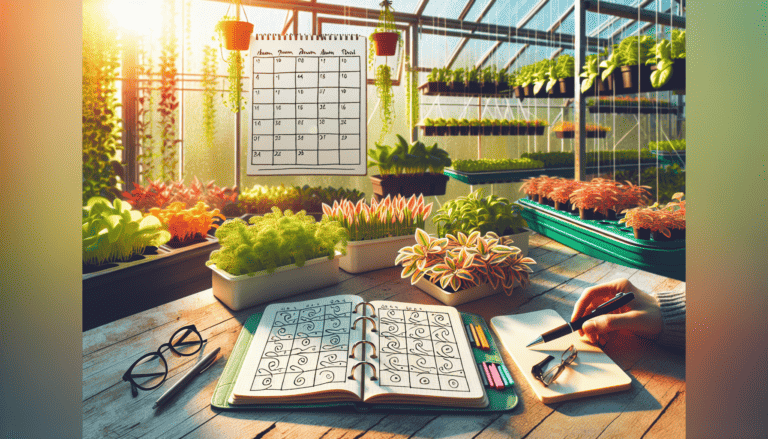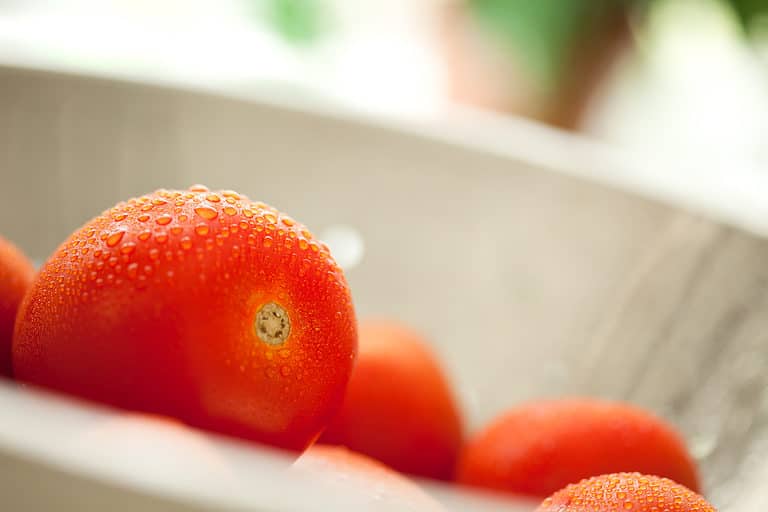Your Essential Guide to Hydroponic Nutrients: Mastering Plant Growth
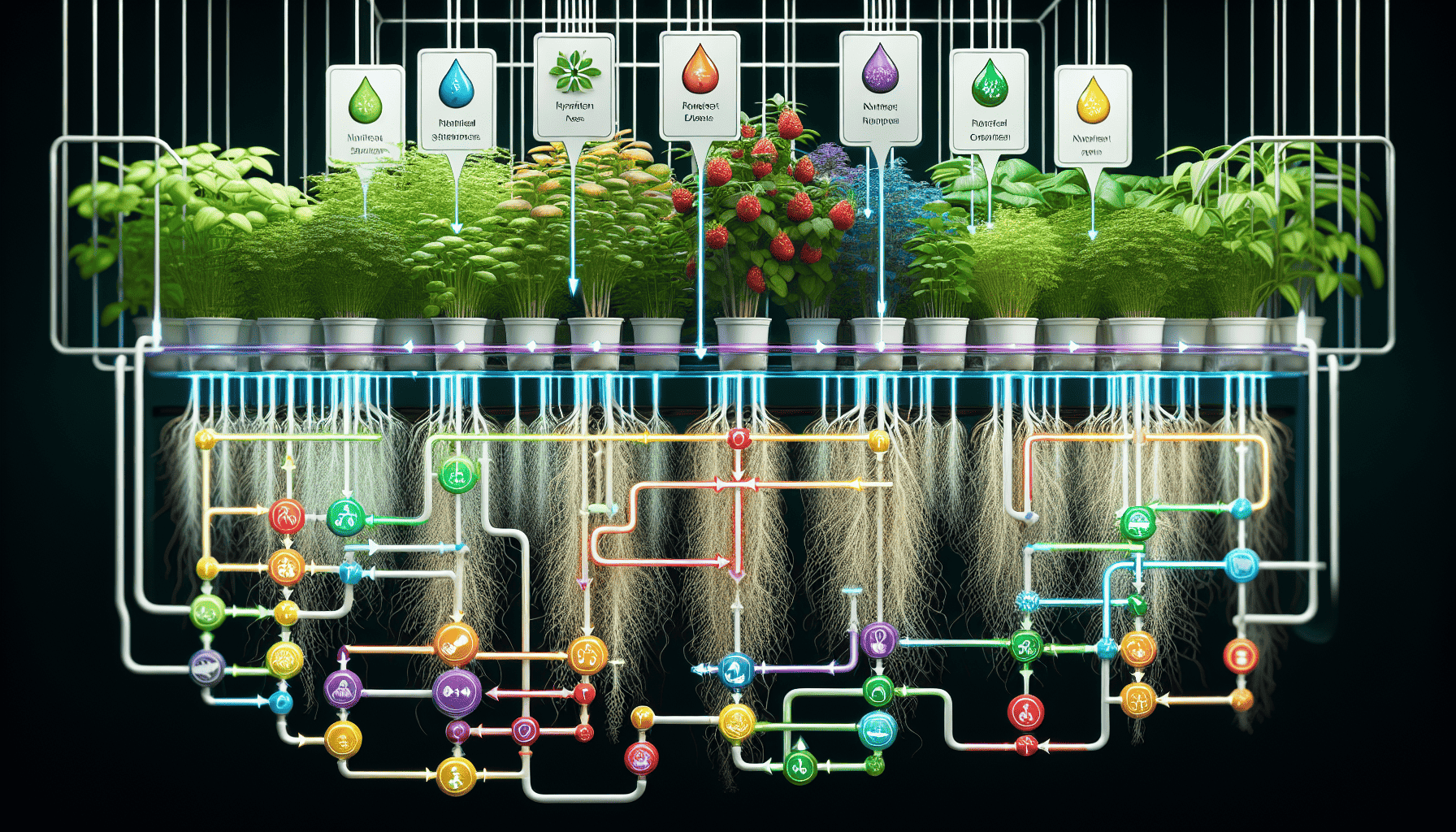
Seeking clarity on hydroponic nutrients? Our guide to hydroponic nutrients is crafted to cut through the confusion, equipping you with the knowledge to select and mix the essential elements for maximum plant health and yield. From the roles of macronutrients to the importance of pH levels, we cover the essentials without overwhelming detail. Seasoned grower or first-timer, you’ll leave here with a solid understanding of how to optimize your hydroponic system’s nutrient regimen.
If you are new to hydroponics or looking to learn more please check out our Ultimate Guide to Hydroponics.
Key Takeaways
Hydroponic nutrients are specially formulated to supply plants with essential nutrients without soil, with precise control needed to avoid toxicity or deficiencies that can arise from imbalanced nutrient mixtures.
Nutrient solutions must be tailored to the specific needs of each plant, and their strength and pH must be regularly monitored and adjusted throughout different growth stages to ensure optimal nutrient absorption.
Choice between liquid and dry hydroponic nutrient mixes depends on factors like ease of use, cost, storage, and transportation, with regular water testing and pH adjustments critical to prevent and correct nutrient imbalances.
Understanding Hydroponic Nutrients
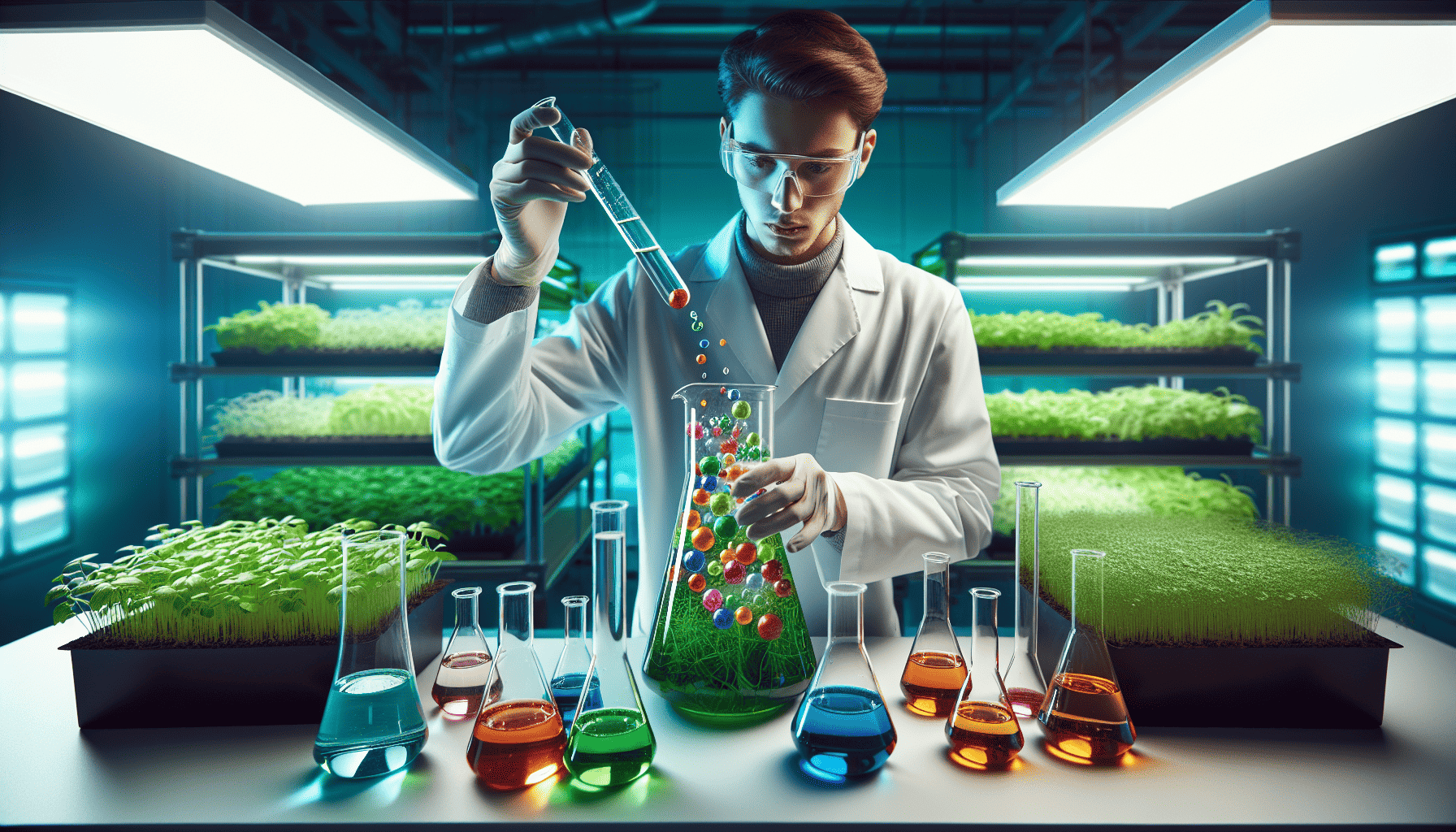
Hydroponic nutrients are specially designed mixtures for hydroponic gardens, providing plants with necessary vitamins and minerals that would typically come from soil. This solution is crucial in promoting higher yields and robust growth of plants.
In contrast to traditional fertilizers used in soil gardening, hydroponic nutrients act as the sole source of vital elements for plant nourishment. These essential components consist of base nutrients like nitrogen, phosphorus, and potassium along with trace minerals such as iron, calcium, and magnesium – all present in a well-formulated hydroponic fertilizer.
The Role of Nutrients in Plant Growth
In the context of hydroponic systems, plants obtain their necessary nutrients directly from water. As a result, it is crucial to maintain an appropriate balance of nutrients in order to promote overall plant health. If there are not enough nutrients present, this can lead to deficiencies and if there are too many, toxicity may occur.
The selection of nutrient mixtures is based on scientific principles rather than random choices. Macronutrients such as nitrogen, potassium and phosphorous serve essential roles in fundamental plant processes including growth, photosynthesis for energy conversion and tissue formation. Similarly important are micronutrients which require smaller amounts but still play a significant role in promoting healthy root development and optimal plant growth within hydroponic environments.
Comparing Hydroponic Nutrients to Soil Fertilizers
Although traditional gardening utilizes soil fertilizers, they are not effective in hydroponics. This is because specialized hydroponic nutrients contain essential elements and micronutrients that cannot be found in soil fertilizers. There is a wide range of options available for hydroponic nutrients such as powder, granular, or liquid forms. Ready-made solutions are also accessible for those who prefer convenience over customization.
For DIY enthusiasts, it’s possible to create their own liquid nutrient solution using granular fertilizers. This allows them to save costs and have a longer shelf life while having the freedom to customize the composition according to their needs.
Crafting Your Nutrient Solution
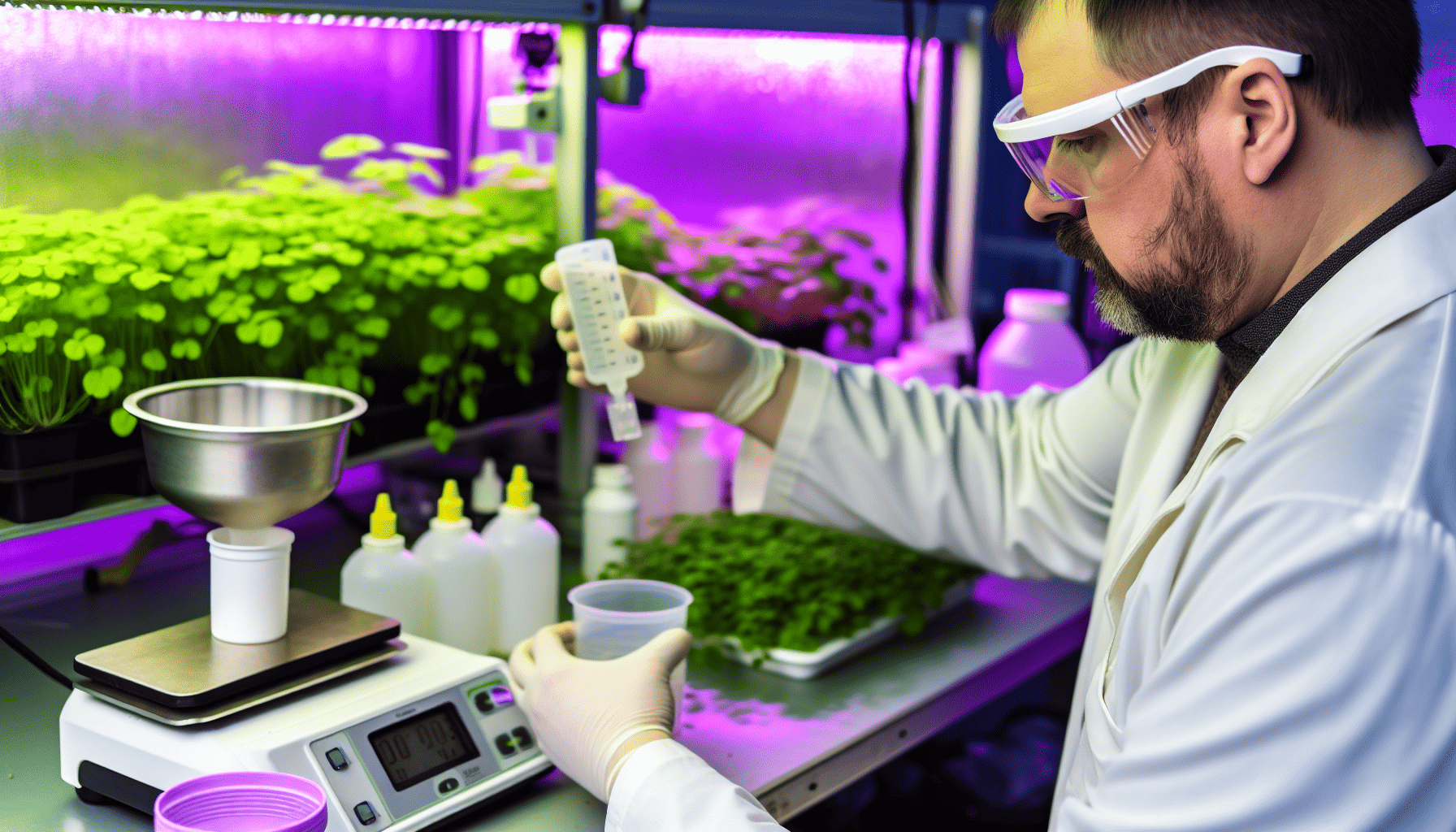
Creating a personalized nutrient solution is an art in itself, involving the precise combination of high-quality ingredients in specific ratios to provide your plants with their ideal nutrient blend. It’s also crucial to adjust the concentration of the solution according to your plants’ needs. Typically, it is recommended to use 1-2 cups of pre-mixed solution for every 16 gallons (60 L) of water.
Regular monitoring and adjustments are essential for ensuring that your plants receive all necessary nutrients for optimal growth. Keep in mind that each plant has unique requirements and may thrive on a different type or ratio of nutrients.
Selecting the Right Nutrient Elements

Selecting the proper nutrient elements for your hydroponic system is crucial to ensure successful plant growth. The essential nutrients needed for hydroponically grown plants include carbon, hydrogen, oxygen, phosphorus, nitrogen, potassium.
Calcium, magnesium, sulfur,boron, chlorine, and iron.
Different types of plants have varying requirements when it comes to nutrients. However, it’s important that they receive adequate amounts of macronutrients such as nitrogen,potassium and micronutrients like iron in order to thrive.
Simply having the right combination of these elements is not enough, their concentration also plays a key role. For instance, a mixture of 15 ml each from Part A and B combined with one gallon of water results in a solution strength measuring approximately 1000 ppm or an EC value of 2.0.This example shows how this particular solution strength can be achieved using specific ratios.
Tailoring Nutrient Solutions for Various Plants
Just as a chef alters ingredients to suit their guests’ preferences, hydroponic gardeners must adjust the nutrient solution according to the specific needs of their plants. This can be achieved through commercially available blends or by manually adjusting based on each plant’s requirements.
For example, lettuce grown in a hydroponic system typically benefits from 100-150 ppm N during germination while tomatoes and peppers may require higher levels of nitrogen for optimal growth. While it may seem daunting at first, with practice, this becomes second nature for experienced growers.
Adjusting Nutrient Concentrations Over Growth Stages
Just like a child’s dietary needs change as they grow, the nutritional requirements of plants also evolve to support their development. Each growth stage has specific nutrient demands that must be met in order for the plant to thrive. For example, during the vegetative phase, it is important to increase levels of nitrogen in order to promote foliage growth. As plants progress through this stage and enter into flowering, it is recommended to slightly decrease nitrogen while maintaining adequate potassium levels and increasing phosphorus concentrations.
Moving on to the flowering stage itself, there is an essential need for higher amounts of both potassium and phosphorus in order for flowers and fruits to develop properly. It is crucial not only to consider these nutrients but also ensure proper balance throughout each unique growth period so that plants can continue growing healthily with all necessary nutrients available at every step along their journey toward maturity.
Liquid Nutrients vs. Dry Mixes
When it comes to nourishing your hydroponic garden, you have two main choices: liquid nutrients and dry mixes. Each option has its own pros and cons. For example, liquid nutrients are more concentrated due to their higher water content. On the other hand, dry mixes contain a larger amount of essential plant NPK ratios, which makes them easier to store and transport.
Deciding between these options ultimately depends on what best suits your specific needs and preferences for maintaining healthy plants in your hydroponic system.
Benefits of Liquid Nutrients
One of the primary advantages of using liquid nutrients is their convenience. They can be easily combined with water, eliminating the need for soil and making it effortless to control nutrient intake. There are more benefits beyond just ease of use: precise regulation of both nutrient levels and pH balance, ensuring that plants receive the specific elements necessary for strong growth and increased productivity.
Because these nutrients are dissolved in liquid form, they allow for quick absorption by plant roots, which results in faster uptake of essential components. This ultimately leads to accelerated plant growth and improved overall health.
Advantages of Dry Mixes
In contrast, dry mixes offer various advantages. They have a higher concentration of nutrients and balanced NPK ratios compared to other types of plant fertilizers. They are more convenient to store and transport due to their lightweight nature and lack of spillage risk.
One notable advantage of dry mixes is their affordability in terms of nutrient density. This also allows for greater flexibility as you can customize the mix according to your plants’ specific needs.
Lastly, these mixes have an extended shelf life, which reduces the need for frequent purchases while eliminating concerns about expiration dates in the short-term future.
Measuring and Adjusting Nutrient Strength
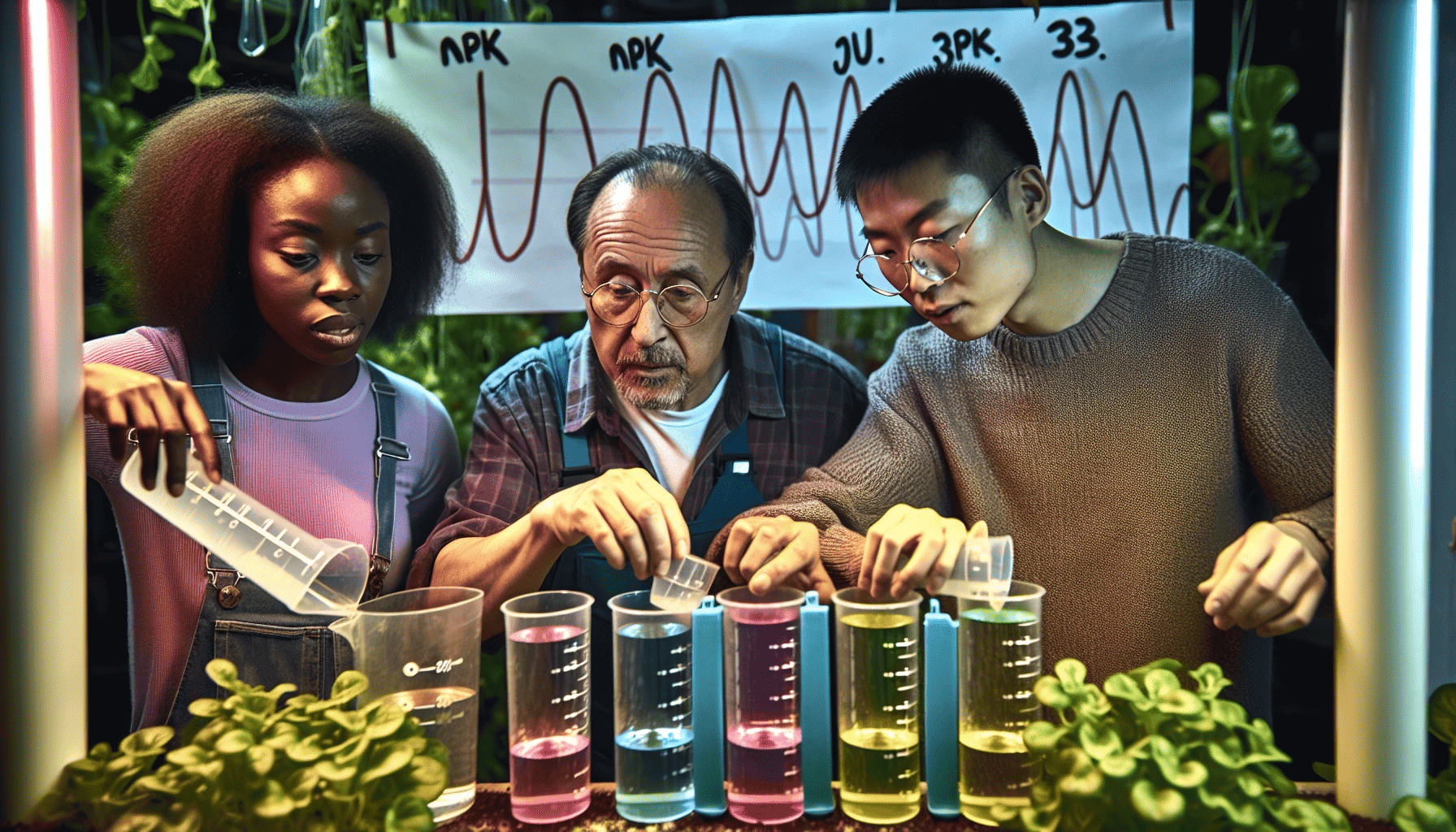
Maintaining precise nutrient levels is a crucial aspect of hydroponic gardening. Proper understanding and management of electrical conductivity (EC) plays an important role in achieving optimal plant growth.
To ensure the best results, it is essential to:
Regularly calibrate your EC meter.
Adjust nutrient solutions according to specific plant needs.
Conduct frequent water tests for monitoring and adjusting EC levels as needed.
4.Creating a record of nutrient solution recipes and modifications can be helpful for future reference.
By following these steps, you can effectively control the nutrient strength in your hydroponic system, which will promote healthy growth of plants.
The recommended range for popular crops grown through hydroponics typically falls between 1.2-2.5 EC levels.This information should serve as guidance while managing nutrients within a hydroponic setup.
Understanding Electrical Conductivity (EC)
Having a good grasp of electrical conductivity (EC) is essential for successful hydroponic gardening. In simple terms, EC measures the amount of salts present in the nutrient solution, with high values indicating higher salt concentration and low values denoting lower concentrations. This measurement directly affects plant growth as it determines the strength of nutrients provided to them.
To ensure optimum development, maintaining appropriate EC levels is crucial for different types of hydroponic plants. Deviations from these levels can impede their growth progress significantly. The use of an EC meter or conductivity meter allows accurate measurement while some digital pH reading kits also have this function available.
Fine-tuning Nutrient Strength for Optimal Absorption
Adjusting nutrient strength is crucial for promoting optimal growth in plants within hydroponic systems. The amount of nutrients needed depends on the plant type and stage of development. To fine-tune, one can utilize a nutrient meter or tester to accurately measure levels, vary concentrations when supplying nutrients, dilute with fresh water to modify EC (electrical conductivity), or use equations to calculate the precise amount of fertilizer required.
It’s important to note that solutions that are too concentrated may lead to toxicity due to excessive uptake by plants while under-concentrated ones could cause imbalances in nutrient intake resulting in weakened overall health and effectiveness.
The Significance of pH in Hydroponic Systems
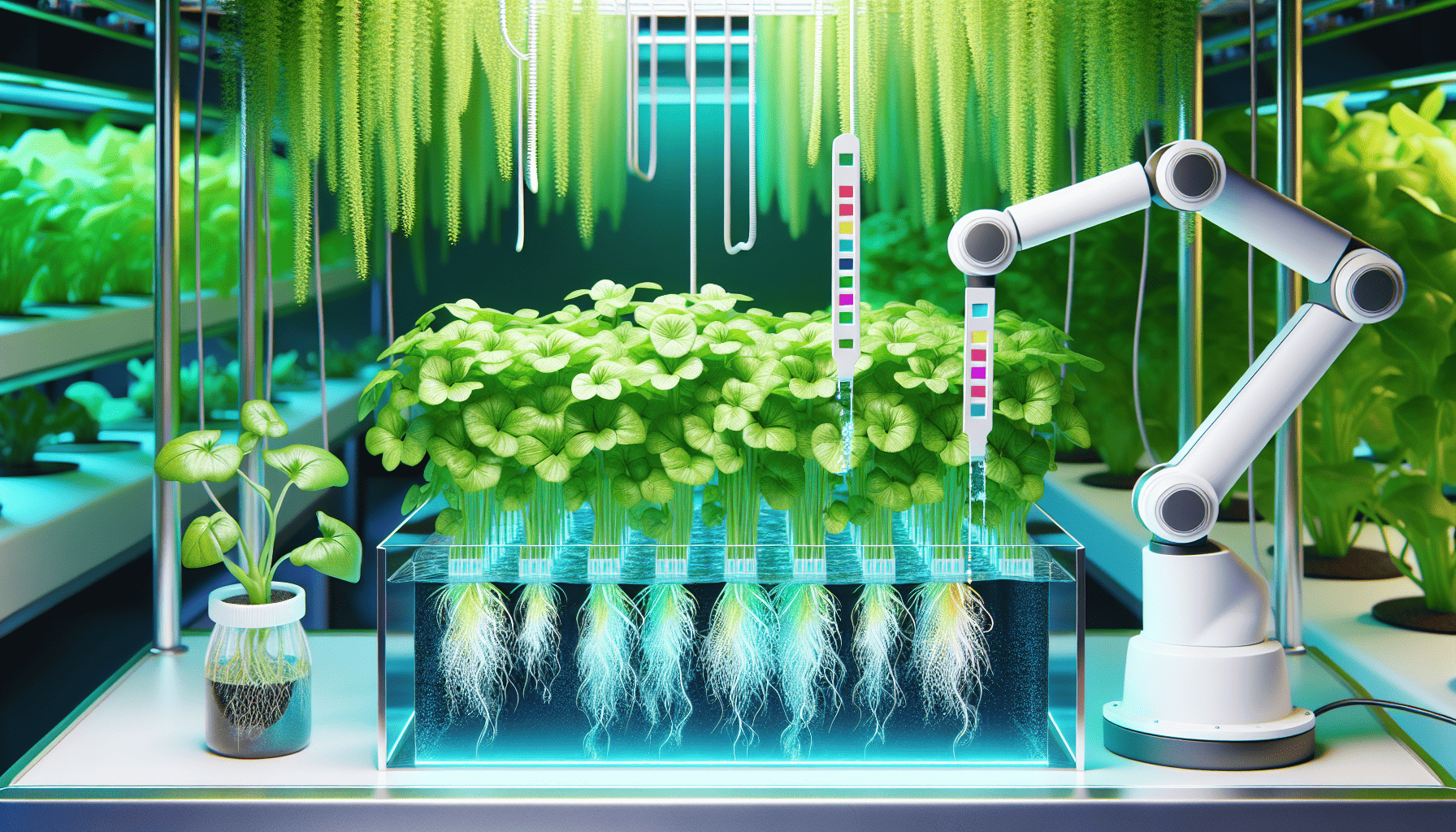
Proper pH levels are crucial in hydroponic gardening, just like in traditional soil gardening. The nutrient availability is affected by the pH balance and it is important to maintain a range of 5.5, 6.5 for optimal growth in most hydroponic systems. Regular monitoring and adjusting the solution’s pH level will ensure efficient absorption of nutrients leading to healthy plant development.
In order to obtain precise measurements, calibrated equipment such as a pH meter with probe/sensor can be used.These readings can then guide adjustments using substances that either lower or raise acidity levels depending on requirements: phosphoric acid or vinegar for lowering. Potassium hydroxide or calcium carbonate for increasing alkalinity.
How to Test and Adjust pH Levels
Monitoring and adjusting pH levels in your hydroponic system is a simple process. There are several types of pH testers available, including the Bluelab PH Pen Pocket Tester, Hanna Instruments HI 9813-6N PH/EC/TDS Meter, Bluelab Combo Ph Meter and Apera Instruments AI311 Premium P Test Kit.
To calibrate the meter for accurate readings, you must press and hold either the ‘mode’ or ‘set/hold’ button on electronic meters while using fresh calibration buffers specifically designed for hydroponics. To modify pH levels in your hydroponic system, using household items such as white vinegar or citric acid to decrease them and baking soda to increase them can be done effectively.
Overall,the process of testingandadjustingphlevelsinyourhydroponsystemisstraightforward.Therearevariousphtestersavailableforuse,suchasBlulablPHPenPocketTester,HannaInstrumentsHI9813-6NPH/ECDATAmeter,andAperaInstrumentsAI311PremiumPTestKit.Toensureaccuratereadings,youmustfollowcalibrationproceduresbyholdingtheproperbuttonforeachtypeofelectronictester.Fortuningtheplevelsusinghomemadeingredients,citricacidorwhitevinegarmaybedownwardlyadjustedwithbakingtodriveitefficientlyupwards.
The Impact of pH on Nutrient Availability
The nutrient solution’s pH level plays a vital role in the availability of nutrients to plants. It is recommended to maintain an optimal pH range, typically between 5.5 and 6.5, for maximum nutrient accessibility, which directly impacts plant growth and overall health.
Deviation from the ideal pH levels can lead to insufficient absorption of essential nutrients, hindering plant development and well-being. In simpler terms, maintaining suitable pH levels in your hydroponic system is crucial as it ensures that your plants receive all necessary nutrients they need for proper growth.
Preventing and Addressing Nutrient Deficiencies
Effective management of nutrient deficiencies is a vital component in hydroponic gardening. These deficiencies can result in various symptoms such as pale or yellowing leaves, weak plant growth, stunted development and reduced branching on plants. Regular monitoring of the pH and EC levels of the nutrient solution, periodic laboratory testing to assess its composition, and visual observation for any signs of deficiency are key steps in identifying potential issues with nutrients.
Neglecting to address these deficiencies can have detrimental effects on overall plant health and yield productivity. It is crucial to take necessary corrective actions that ensure adequate supply of essential nutrients for your crops.
Recognizing Signs of Deficiency in Hydroponic Plants
It is crucial to be able to identify the signs of nutrient deficiency in your hydroponic plants as a first step towards solving the issue. These indications may vary and can include pale green or yellow leaves, stunted growth, leaf discoloration or distortion, and yellowing of leaves.
Different types of plants will exhibit different indicators when facing nutrient deficiencies. Calcium, magnesium, and iron are among some common ones. When these deficiencies occur, it can have a significant impact on plant development and productivity levels,resulting in stunted growth, reduced yield, and physiological as well biochemical changes.
Neglecting to address nutrient deficiencies can severely affect the health and performance of hydroponic plants.Leaf color change,stunting,deteriorated physical appearance are all consequences that can result from not addressing such problems.Nutrient imbalance, especially involving key elements like calcium, magnesium, and other essential nutrients, should be carefully monitored to prevent negative impacts on plant health, growth and overall production quality.
Corrective Measures for Nutrient Imbalances
After identifying a lack of nutrients, the next step is to take corrective actions. Here are some methods you can use:
To address nitrogen deficiency in plants, apply fertilizers high in nitrogen and maintain the pH level between 5.5 to 6.8 for optimal absorption.
If your plants have an imbalance of potassium, adjust the composition of the nutrient solution or change fish feed in aquaponic systems.
For phosphorus deficiencies, ensure that medium’s pH balance falls within ideal levels and maintain appropriate phosphorus levels in the nutrient solution used for plant growth.
Sustainable Hydroponic Nutrients: Organic Options
Organic nutrients offer a promising alternative to synthetic ones in hydroponic systems, aligning with the goal of sustainable and environmentally-friendly gardening. The use of organic nutrients has been linked to lower levels of nitrate, reduced presence of harmful residues in plants, enhanced taste and flavor potential for produce that is more natural and potentially healthier.
While opting for organic nutrient solutions presents challenges such as increased complexity and required attention compared to using synthetic options, many growers still favor them due to their numerous benefits when used on soil grown plants. Despite this preference among some gardeners towards organic methods, it may require additional time management efforts.
Overall, although managing an environment where only plant-based sources are utilized can be tricky at times. It proves advantageous over conventional approaches, especially because it has resulted in results like less toxic elements present in crops and a better all round end product perhaps simply through using wholesome techniques involving taking care how we source our very land -due to financial reasons- but grow even under pressure creating what could most certainly signify tremendous success.
Choosing Organic over Synthetic Nutrients
When deciding between organic and synthetic nutrients, it ultimately comes down to personal preference and gardening values. While both types can effectively support plant growth in hydroponic systems, organic options have added benefits for the environment and human health. These include better use of resources, potential water conservation, and improved overall well-being.
In terms of effectiveness within hydroponic systems specifically, there is little difference between organic nutrients versus their synthetic counterparts. In fact, in fact, in fact, in fact, in fact, in fact, in fact, in fact, in fact, in fact, in fact, in fact, in fact, in fact, in fact, in fact, in fact, in fact, in fact, in fact, in fact, in fact, in fact, in fact, in fact, in fact, in fact, in fact, in fact, in fact, in fact, in fact
Managing Organic Nutrient Solutions
The management of organic nutrient solutions entails a few essential practices.
Developing fertilizer programs or recipes
Providing organic materials for plants through pre-digestion
Consistently monitoring the nutrient solution and plant nutrient status
Ensuring the nutrient solution’s composition is suitable.
Maintaining nutrient balance in organic hydroponics involves:
Using hydroponic nutrient solutions that provide the perfect balance of nutrients
Following established fertilizer programs or recipes
Ensuring proper pH levels
As with any gardening endeavor, challenges can arise, but with careful management and attention, you can successfully use organic nutrients in your hydroponic system.
Summary
To achieve successful growth and yield in your hydroponic garden, it is essential to have a good understanding of hydroponic nutrients. This includes selecting the appropriate nutrient elements, adjusting their concentrations accordingly, maintaining proper pH levels and addressing any potential nutrient deficiencies. Whether you prefer using liquid nutrients or dry mixes, or even opt for organic options, the key lies in finding the most suitable solution for both your plants and gardening goals. With knowledge and practice, you can become an expert at hydroponic gardening and witness your plants thrive with great success.
Frequently Asked Questions
How do you calculate nutrients for hydroponics?
To determine the appropriate nutrient levels for hydroponic systems, utilize either of these formulas: FR = NA/ (%NxDx10) if using a liquid solution or FR = 100 x NA/%N for solid solutions. Both methods will help calculate the necessary amount of nutrients needed in your nutrient solution.
What nutrients are best for hydroponics?
In order to optimize growth in hydroponic systems, it is recommended to use a combination of key nutrients such as nitrogen, phosphorus, potassium, calcium, magnesium, and other essential elements including sulfur,manganese, copper, zinc, and nickel. These vital ingredients are crucial for providing the necessary support for plants’ development.
Plants can derive their needed amounts of carbon,hydrogen and oxygen from both water and air sources.So, it’s important to choose nutrient solutions that offer a balanced supply of these three fundamental components alongside the aforementioned.
Can you make your own hydroponic nutrients?
You have the option to create your own hydroponic nutrient solution by mixing water with Masterblend, Epsom salt, and calcium nitrate according to a specific recipe. It is crucial to dissolve each ingredient separately in order for them to be effective in providing essential nutrients for your hydroponic plants. Calcium should not be omitted as it plays an important role in plant growth.
What’s the difference between hydroponic nutrients and soil fertilizers?
The role of hydroponic nutrients is crucial in providing essential nutrients for plant growth, while soil fertilizers rely on naturally existing soil nutrients. As a result, their purposes differ and they play distinct roles in supporting plant growth.
How do I measure and adjust nutrient strength in my hydroponic system?
For precise measurement and adjustment of nutrient strength in your hydroponic system, utilize a nutrient tester or meter. To regulate the electrical conductivity, you can modify the concentration of nutrients supplied or dilute them with fresh water.
With these techniques and tools at hand, proper management of nutrient levels within your hydroponic setup is achievable.



